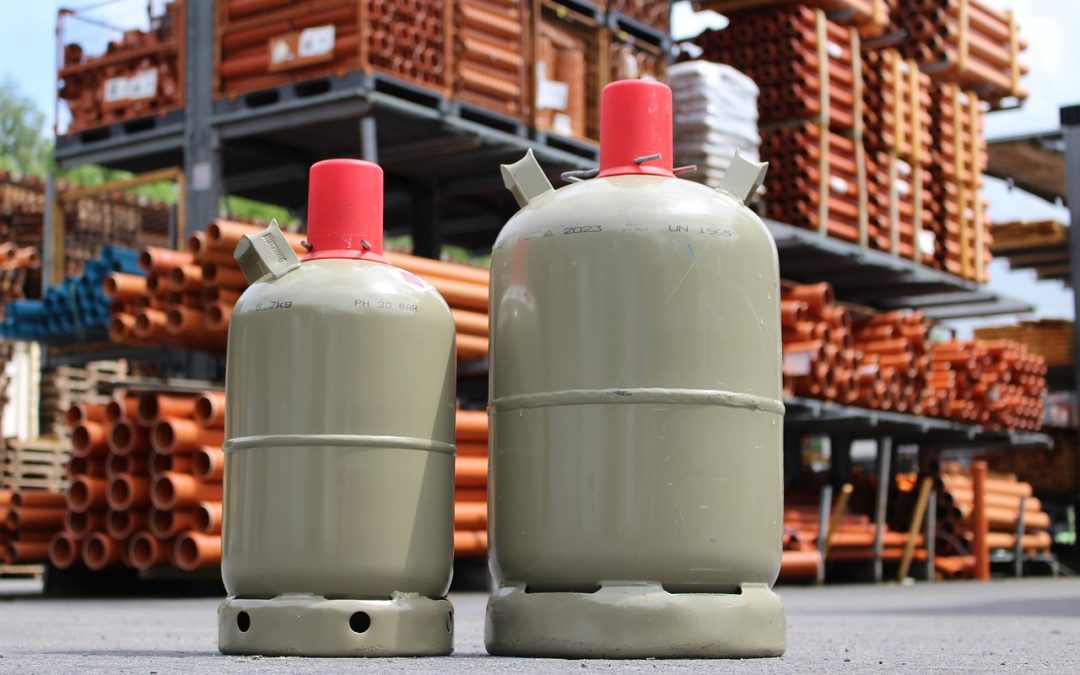If you are working with propane, then you will need to be using a propane gas regulator valve. This device helps to maintain the right pressure during operation, supporting safety and consistency across the job. But what exactly is going on inside the valve’s housing while the system is running?
In this article, we’re going to be exploring this in more detail. We’ll take a look at how propane gas regulator valves work and why they are so important. Read on to discover more.
Understanding Propane Gas
Propane is a gas in the alkane family, consisting of three carbon atoms and eight hydrogen atoms. In storage, the propane is actually in its liquid form, but the reduction in pressure causes it to vaporize as it leaves the storage cylinder, and it becomes a gas. This gas is particularly flammable, with a high octane rating.
The substance may be used as fuel for heating and cooking or as a combustible material in industrial and agricultural applications. It is classed as an alternative fuel and may be used within specially modified or designed internal combustion engines. The propane molecule itself may also be utilized in the manufacture of plastic materials.
Operating Mechanisms
There are two basic types of propane gas regulator. These are the single-stage regulator and the dual-stage regulator. Both of these devices work in a similar fashion – and share many of the same internal components – but there are important differences between the two.
Single-Stage Propane Gas Regulators
Single-stage regulators – as the name suggests – control the pressure of the gas at only a single point. This is a simpler device than the dual-stage regulator and should only be used in applications where the pressure of the gas at the inlet can be closely monitored and controlled. The single-stage unit works like this:
- Propane gas flows into the regulator via the inlet. A gauge positioned at the inlet measures the pressure of the gas as it flows into the regulator.
- The gas interacts with a poppet valve just beyond the inlet. As pressure builds around the poppet valve, it opens to permit the gas to move through into the next chamber in a controlled and regular manner.
- The gas moves beyond the poppet valve and fills the main chamber of the regulator. An operating handle or wheel is attached to the exterior of this chamber, so the pressure can be regulated by the user.
- The user can turn the handle or wheel to adjust the pressure. The wheel or handle operates a screw, which moves down or up depending on whether the handle is turned clockwise or counterclockwise.
- At the base of the screw is a diaphragm – this diaphragm does not permit any propane gas to move through it and so acts as an impervious wall within the chamber.
- If the diaphragm moves down, the volume of the chamber is decreased, which increases the pressure of the propane gas within. If it moves up, the volume of the chamber increases, and the pressure decreases.
- The propane gas – now at a regulated pressure – flows out of the outlet. A gauge measures the pressure at this outlet.
Dual-Stage Propane Gas Regulators
As mentioned above, dual-stage propane gas regulator valves work on mechanical and physical principles similar to the single-stage model. However, there is an additional phase of regulation contained within the same housing, which makes these devices better suited to larger-scale systems or for any application where regulation and monitoring of gas at the inlet is difficult.
- Propane gas flows into the regulator at the inlet, where a gauge measures its pressure.
- The gas moves through the first poppet valve, opening the valve as the pressure increases and flowing into the primary chamber.
- A pressure valve, calibrated according to factory settings, operates the diaphragm in the primary chamber, maintaining the required pressure.
- The gas flows out of the primary chamber through a second poppet valve.
- Once the increased pressure has opened the poppet valve, the propane gas enters the secondary chamber, where a diaphragm is controlled by a pressure adjustment handle or wheel.
- The user can then alter the pressure utilizing the handle or wheel, and the gas flows out of the outlet.
- A gauge measures the pressure of the gas as it leaves this outlet.
Why Propane Gas Regulator Valves Are Important
Now that you know more about how these pieces of equipment work, let’s look a little more closely at their role in a propane gas system. What is it that makes propane gas regulator valves so important?
- Propane is a flammable substance. Propane is used as a fuel gas, and so one of its main properties is its high level of flammability. This can cause a significant safety hazard if the gas is not regulated.
- While propane is non-toxic and does not pose a risk to the environment, it is an asphyxiant. While propane is not carcinogenic nor is it irritating to the skin or eyes, it can still be dangerous to health in higher concentrations. Exposure to propane can make breathing difficult.
- Propane applications require a regular gas flow. Surges and lulls in the propane supply can result in irregularities, which then lead to inadequate or unexpected results.
- Propane inlet gas may not be pre-regulated. In larger-scale operations, or in systems in which inlet gas pressure cannot be properly monitored, a dual-stage propane gas regulator may be required to ensure safe operation.
Find Sherwood Propane Gas Valves and Other System Components in Our Range
Here at Chemtech, we are proud to provide the highest-quality components to our customers and clients. These include Sherwood compressed gas valves and system components that achieve optimal safety and performance across a range of different applications. Explore our product pages and find exactly what you need for your project, or reach out to our team to discover more.
